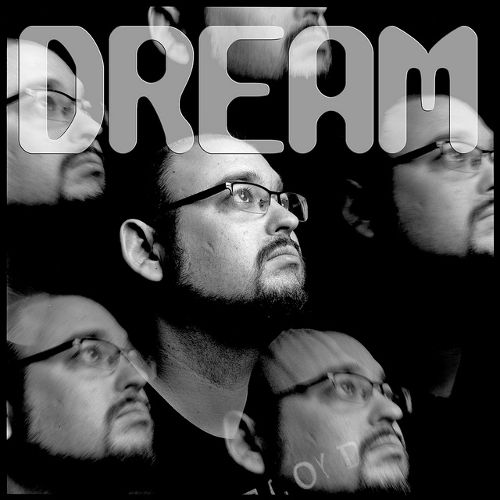COLOR PROCESSING
Making your own color processing at homeI did a lot of film, mainly 35mm rolls as we know it today. Then at some point, I also did a lot of medium format, 120 film, using Hasselblads and such. A few years ago, I went up again in the chain and did some large format, mainly 8x10, but also some 4x5, 5x7, 11x14 and up to 20x24. for the most part, I did black and white, but for 4x5 and 8x10, I did a lot of color too. In a never ending exploration of photography, I also did some weird photographic format, like 110, 126, and others. I did a few Kodak disc, which are color, but with no lab to process them. 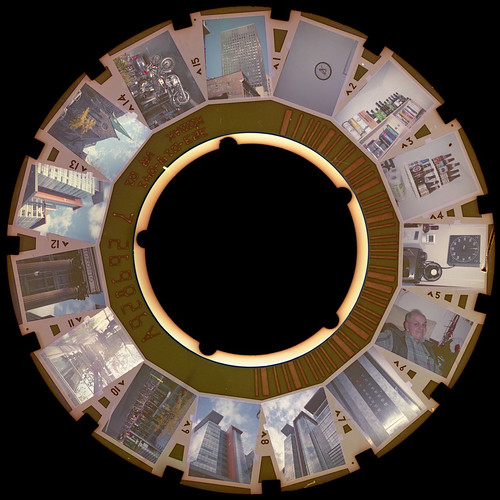 This is the reason why I started to do my own color processing. I started with C-41 chemestry, the process to develop negative color film. 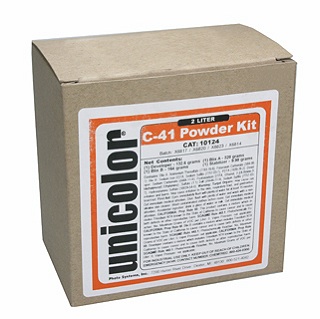 The Unicolor C-41 Powder Kit has many advantages: as it's in powder form, you can ship it in a plane in total security, it's lighter, so cheaper. This kit also combines different solutions in the same one, so you need less baths. With the Unicolor C-41 Powder Kit, you have 5 baths to prepare : 1. Pre-soak 2. Developer 3. BLIX (which is a mix of bleach and fix) 4. Stabilizer 5. Wash / Rinse Do steps 1 to 4 in controlled temperature, the most critical bath is the developer, if your temperature changes a bit, your colors will shift, like here : 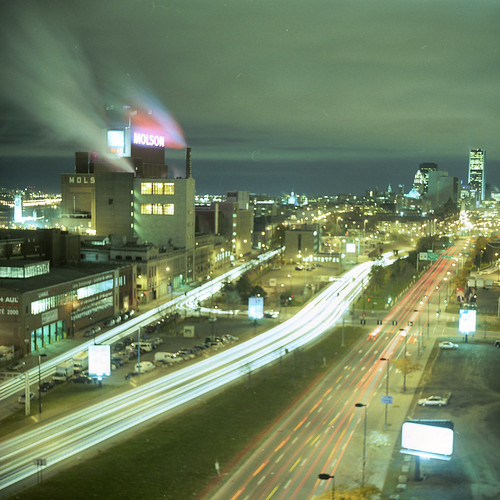 A few years ago, I did so many 8x10 that the price for processing them would have cost my the price of a brand new car. It was either that, or learn to process them myself. I chose the latter. I had many regular color negative C-41 8x10 sheets, but I also had a lot of slides (positive film) which has to be processed in E-6 chemestry. Compairing to C-41, E-6 processing is a complete other beast. 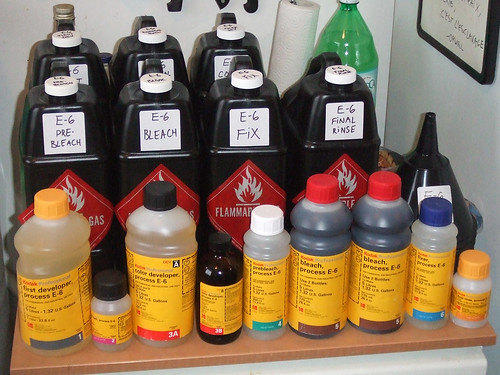 The kodak E-6 Kit has many chemestry and you have to prepare 9 baths, all of them are temperature controlled and 2 of them are critical. All baths have specific temperatures, and if you deviate, your colors and density will shift. 1. Pre-soak, 5 minutes, 95-104F 2. First Developer, 6-7 minutes, 100.4F +/- 0.5F 3. Wash, 2 minutes, 95-104F 4. Reversal Bath, 2 minutes, 95-104F 5. Color Developer, 6 minutes, 100.4F +/- 2.0F 6. Pre-Bleach, 2 minutes, 95-104F 7. Bleach, 6 minutes, 95-104F 8. Fix, 4 minutes, 95-104F 9. Wash, 6 minutes, 95-104F 10. Final Rinse, 1 minutes, ambient All these bath adds up to a lot of weight. On top of that, they have to be in a temperature controller bigger bath. You can see that my baths all fitted in a huge 200 liters cooler. 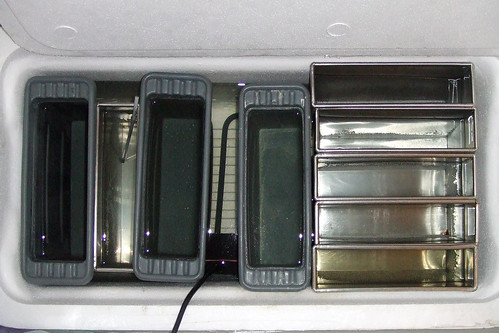 That's 200 kilograms, or 440 pounds ! Make sure that your counter is solid enough for it. 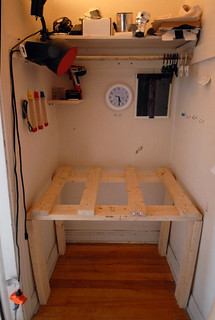 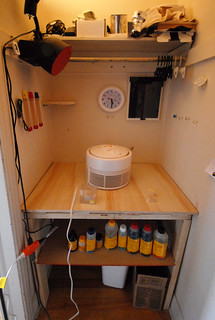 And to be on the safe side, color chemestry could be harmful, so install a light tight vent and use a good gasmask. 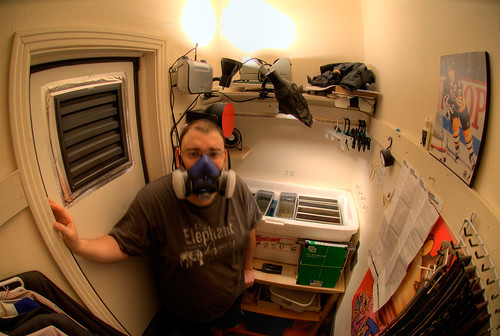 The results are quite impressive, a 8x10 slide is always filled with more details you'll ever need. 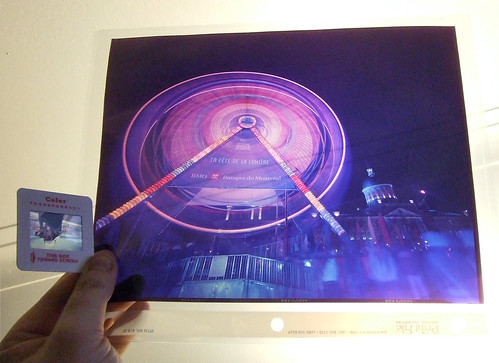 Another trick... If you process film in daylight tanks, usually for film rolls, you do not need this trick, but if you process large format is large tanks, then youhave to process it in total darkness. I then record myself counting time, and even telling myself when to flip film, agitate, move to the next bath... All I have to do when processing is press play, and listen to the instruction :-) My conclusion would be, if you want to do any color processing on your own, if you only do film rolls, 35mm or medium format, for the price you pay for processing, to process it yourself is not worth the effort, there is no gain. If you do large format, then it's another story, as processing large format is much more expensive, processing yourself in color is worth considering. If you have to do C-41 processing, simply get the Unicolor kit, it's quite easy if you get a good thermometer and heater. If you have to do E-6 processing, well, it's still worth to do yourself, but get ready for a ride, processing E-6 at home is a huge project. Thanks for being there!Eric Constantineau, small photographer in this big World  |
CONTACT
